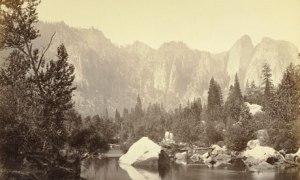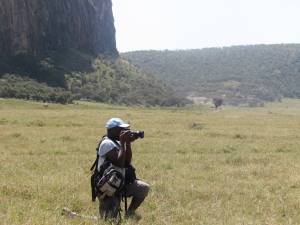As scientists, we have the ‘publish or perish rule’ entrenched in our DNA. In any conference, scientific meeting or course, our minds are shaped to follow this rule and our efforts are channeled into that path leading to publication. But is that it? The efforts put in the research, the field encounters and the information gathered culminates into graphs and p-values under certain word limits restricted by journal editors.
Do not get me wrong, science and its by product- publishing in peer reviewed journals is of central importance in our understanding of species and the interventions required for their conservation. However, when it comes to the effectiveness of conservation messages, I argue that a picture has a distinct hands down advantage over the best well written paper published even in high impact factor journals such as Science.

For example, anyone remember the picture on the left? Following rules of photography or not, this picture arguably had more impact on conservation of these incredible creatures than any long term study by any elite university or world renowned conservation biologist.
So what is Conservation photography?
Of course there are different definitions out there, but my favorite is by Florida based conservation photographer Carlton Ward Jr., simply “photography that empowers conservation”. It is a step further from nature photography in that it is a proactive, issue-oriented approach which acts as an agent for sustaining the biosphere and ethno sphere.In fact, although not acknowledged, conservation photography has served this role since the 1860’s. On June, 29, 1864, the US Congress enacted a bill signed by Abraham Lincoln, establishing Yosemite as the nation’s first legislated nature preserve, to be managed through the State of California.

The support of the Congress was secured, in part, through landscape photographs of Yosemite by pioneering photographer Carleton Watkins. Then, five years after Yosemite received federally mandated state protection, photography was again used to build support for protecting Yellowstone, in the Wyoming Territory, helping create the world’s first national park.
Closer home and maybe one of the most successful conservation photography legacy was the Megatransect Project, starting in Congo and emerging on the Atlantic coast of Gabon by Michael Nichols and Michael Fay. With conservation as the end goal, Nichols’ photographs provided the team’s most powerful weapon. When Fay presented the photographs to Gabon’s president, El Hadj Omar Bongo, he decided to create a system of thirteen national parks, the most significant conservation result to have been inspired by photography in recent decades.

With all these evidences of the powerful impact of conservation photography (see below for more examples), methinks the role of conservation photography has been downplayed and thought of as an elite hobby of wealthy westerners rather than an inexpensive tool for conservation. With cutting edge technology in camera build, there has never been a better time for conservation biologists in Africa to utilize conservation photography for species conservation and advocacy purposes.
Despite there being opportunities offered to develop conservation photography by organizations such as the National Geographic, more efforts to empower young native conservation photographer’s needs to be a priority of conservation funding and educational organizations. These will help bring into light more conservation stories told from natives points of view. Africa needs its own native conservation photography association likened to the ICLP,ARKive,Blue Earth Alliance; and there is no shortage of native talent to drive this revolution forward.
By Njoroge Wa Chege (Kibale, 2012)
Njoroge is a native Kenyan documentary, conservation and natural history photographer as well as a conservation biologist who hopes that the use of images will be central to conservation advocacy, education and awareness in Africa.
*The thoughts herein are inspired by Joe Riis of the National Geographic, Christina Mittermeir of the International Conservation League of Photography, Carlton Ward Jr. of the Legacy Institute of Nature and Culture and Fabiola Monty.
Further inspiring stories:
1) In the 20th century a young Ansel Adams armed with his breathtaking wilderness pictures influenced the formation of the King Canyon National Park.
2) George Masa’s photography inspires the creation of Smokey Mountain Park in North Carolina.
3) Phillip Hyde helped create Dinosaur National park and make the Grand Canyon a symbol of American wilderness
4) Peter Dombrovskis is credited for helping start the national environmental movement by turning his camera toward the wild rivers of Tasmania, where proposed hydroelectric dams threatened to flood valleys, destroy wildlife habitat, and disrupt water flow.
4) Efforts by Chinese Xi Zhinong to document the vulnerability of the snub-nosed monkey amidst rampant logging led to change in Chinese government policy.

